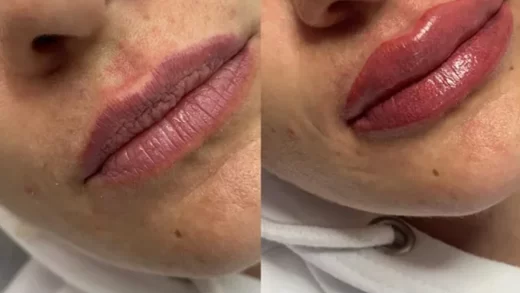When undergoing surgery, one common concern for many individuals is the visibility of scars after the procedure. While advancements in medical technology have significantly reduced the appearance of scars, it is important to understand why surgery scars may never completely disappear.
Understanding the Formation of Scars
Scars are a natural part of the body’s healing process. When the skin is injured, whether through surgery or trauma, the body responds by producing collagen fibers to repair the damaged area. This repair process often results in the formation of a scar.
The severity and visibility of a scar can vary depending on various factors such as the depth and size of the incision, individual skin type, genetics, and the healing process itself. While some scars may fade over time and become less noticeable, certain types of surgery scars tend to be more persistent.
Hypertrophic Scars
Hypertrophic scars are raised, red scars that occur as a result of an overproduction of collagen during the healing process. These scars may be itchy, tender, or even cause discomfort. Hypertrophic scars typically stay within the boundaries of the original incision and may improve in appearance over time, but they might not completely go away.
Keloid Scars
Keloid scars are similar to hypertrophic scars, but they go beyond the boundaries of the original incision. They can be thick, raised, and often have a darker color. Keloid scars are caused by an overproduction of collagen even after the wound has healed. These scars are more difficult to treat and may require medical intervention such as corticosteroid injections or surgical removal.
Factors Affecting Scar Healing

Several factors can influence the healing process of scars and their eventual visibility:
- Genetics: Some individuals are genetically predisposed to develop more noticeable scars.
- Wound Care: Proper post-operative wound care, including keeping the area clean and protected, can contribute to better scar healing.
- Skin Type: Different skin types, such as fair or darker skin, may react differently to the healing process and develop scars more prominently.
- Location of the Scar: Scars located in areas with high tension or frequent movement, such as joints or the face, may be more prone to increased visibility.
Reducing the Appearance of Surgery Scars
Although surgery scars may never completely fade away, there are various methods and treatments available to help minimize their appearance:
- Silicone-Based Products: Silicone gels or sheets can be applied to scars to help flatten and soften them, potentially reducing their visibility.
- Steroid Injections: For hypertrophic or keloid scars, corticosteroid injections can be administered to reduce redness, itching, and overall scar size.
- Laser Therapy: Certain laser treatments can be effective in reducing the appearance of scars by targeting the scar tissue and stimulating collagen remodeling.
- Surgical Scar Revision: In some cases, surgical scar revision may be recommended, especially for more pronounced or disfiguring scars. This procedure involves removing the old scar and repositioning the incision to create a more aesthetically appealing result.
Surgery scars may never completely disappear, but understanding the factors influencing their visibility and exploring available treatment options can help individuals minimize their appearance. Consulting with a medical professional can provide personalized guidance on scar management and determine the most suitable approach for individual cases.


